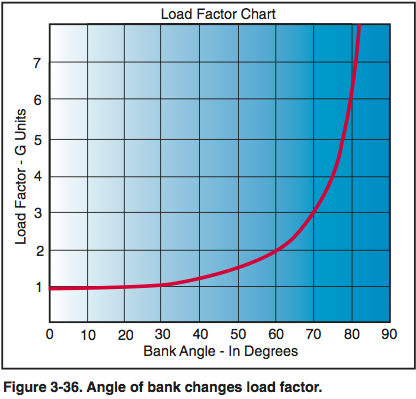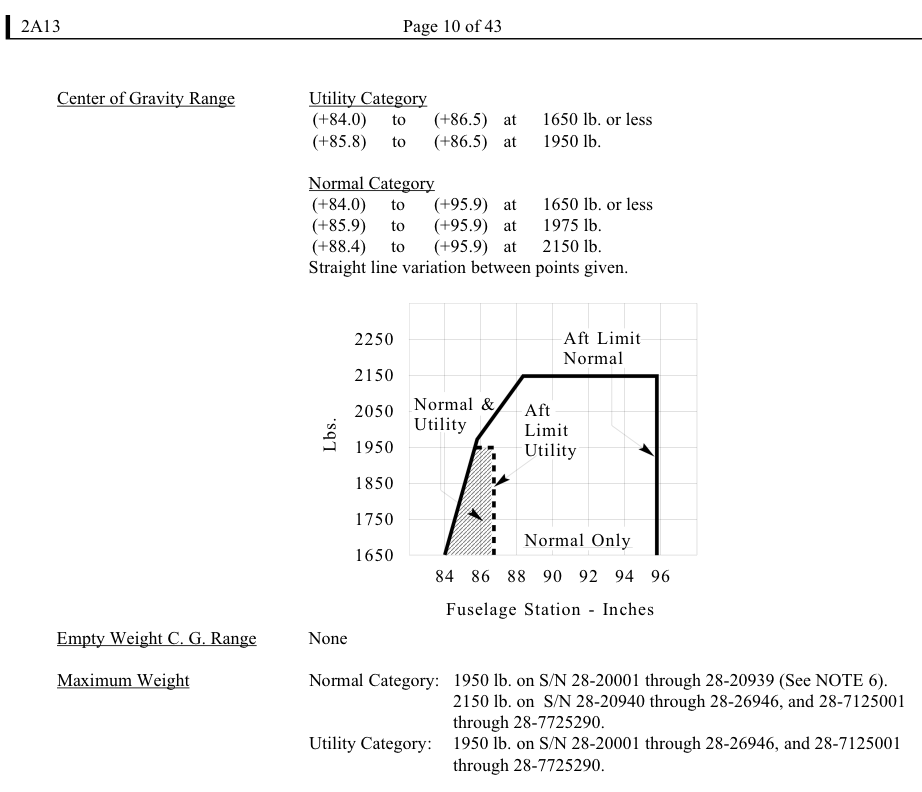Aircraft Categories
Certification of Aircraft is covered by PART 23–AIRWORTHINESS STANDARDS: NORMAL, UTILITY, ACROBATIC, AND COMMUTER CATEGORY AIRPLANES Among other things it sets out the four types of aircraft that are normally flown in Part 91 operations.
FAR §23.3 Airplane categories.
(a) The normal category is limited to airplanes that have a seating configuration, excluding pilot seats, of nine or less, a maximum certificated takeoff weight of 12,500 pounds or less, and intended for nonacrobatic operation. Nonacrobatic operation includes:
- (1) Any maneuver incident to normal flying;
- (2) Stalls (except whip stalls); and
- (3) Lazy eights, chandelles, and steep turns, in which the angle of bank is not more than 60 degrees.
(b) The utility category is limited to airplanes that have a seating configuration, excluding pilot seats, of nine or less, a maximum certificated takeoff weight of 12,500 pounds or less, and intended for limited acrobatic operation. Airplanes certificated in the utility category may be used in any of the operations covered under paragraph (a) of this section and in limited acrobatic operations. Limited acrobatic operation includes:
- (1) Spins (if approved for the particular type of airplane); and
- (2) Lazy eights, chandelles, and steep turns, or similar maneuvers, in which the angle of bank is more than 60 degrees but not more than 90 degrees.
(c) The acrobatic category is limited to airplanes that have a seating configuration, excluding pilot seats, of nine or less, a maximum certificated takeoff weight of 12,500 pounds or less, and intended for use without restrictions, other than those shown to be necessary as a result of required flight tests.
(d) The commuter category is limited to propeller-driven, multiengine airplanes that have a seating configuration, excluding pilot seats, of 19 or less, and a maximum certificated takeoff weight of 19,000 pounds or less. The commuter category operation is limited to any maneuver incident to normal flying, stalls (except whip stalls), and steep turns, in which the angle of bank is not more than 60 degrees.
(e) Except for commuter category, airplanes may be type certificated in more than one category if the requirements of each requested category are met.
Comments
Parts of this regulation need explanation/clarification. Let’s start with some definitions.
STALL—A rapid decrease in lift caused by the separation of airflow from the wing’s surface brought on by exceeding the critical angle of attack. A stall can occur at any pitch attitude or airspeed.
WHIP STALL—A whip stall is generally considered a stall during a rapid pitch up. In such a case the angular momentum (in pitch) causes the airplane to go deeper into the stall than it otherwise would. Done with enough agressiveness and/or in a steep enough attitude and you will actually drop backwards before the nose falls at which point the nose will “whip” downward “with great enthusiasm”. (Lance Fisher) A “Whip Stall” is entered from a “Tail Slide” in which the aircraft is not quite vertical, after slidding aft the weight of the engine causes the nose to pitch forward VERY, read EXTREMELY, rapidly. I’ve done them in a Stearman, I would not consider them in a lesser plane… (Tom)
LAZY EIGHTS, CHANDELLES, AND STEEP TURNS—These are maneuvers required for the commercial certificate. Linda Dowdy explains how to do a chandelle. And Gary Wing has a video explaining chandelles.
Greg Gordon explains how to do a lazy eight. For the commercial PTS the bank angle for chandelles is 30° and the bank angle in chandelles does not exceed 45°. Steep turns are just that, turns with a bank angle greater that 60°. The commercial PTS only requires steep turns of 50°. All of these maneuvers impose greater than normal loads on the wings and tail but as long as the bank angle is not greater than 60° they may be performed in a Normal category aircraft. The chart below shows how the load factor increases as angle of bank increases.

SPINS—Pilots are trained about spin awareness because of the enormous number of accidents that occur from stall-spin entry near the ground—often on approach to landing. Spins are not approved in Normal category aircraft, however, many aircraft are certificated for spins or in the Utility category when the CG is located forward. The reason is that “generally, an airplane becomes less controllable, especially at slow flight speeds, as the center of gravity is moved further aft. An airplane which cleanly recovers from a prolonged spin with the center of gravity at one position may fail completely to respond to normal recovery attempts when the center of gravity is moved aft by 1 or 2 inches.” Pilots Handbook of Aeronautical Knowledge 3-34.
CERTIFICATION
The Type Certificate Data Sheet for most aircraft certified under CAR 3 or FAR Part 23 can be found at the FAA Regulatory and Guidance website. It lists limitations and information required for type certification including airspeed limits, weight limits, thrust limitations, etc. Older models may not be in the database. The information in the TCDS includes the certification category, and if an aircraft is certificated in multiple categories, the limitations for each category. For example, the Cessna 182 and Cessna 210 are only certificated in the Normal category. Some years of the Piper Cherokee 140 are certificated as Normal and Utility category. This is an excerpt for the Cherokee.
Notice that the CG limits for Normal allow a CG that is much farther aft than the CG limits for Utility category. The Utility category also has a lower gross weight limit.
AOPA Weekly Question
Question: When did the FAA start utilizing the various airplane airworthiness standard categories?
Answer: The effective date was Nov. 13, 1945, enacted by the then current Part 3 of the U.S. Civil Aviation Regulations. The airworthiness categories—normal, utility, and aerobatic—were determined based upon factors such as strength, operation, and serviceability. Normal category airplanes were intended for nonaerobatic, nonscheduled passenger, and cargo operations. Utility category airplanes were permitted to operate under limited aerobatic maneuvers such as steep turns, stalls, lazy eights, and chandelles (excluding snap and inverted maneuvers). Aerobatic category airplanes did not have any specific operational restrictions unless disclosed by any required flight tests. The appropriate category suffix (i.e., N for normal) is listed on the airworthiness certificate. Not much has changed today based upon the now current FAR 23.3 “Airplane Categories.”



